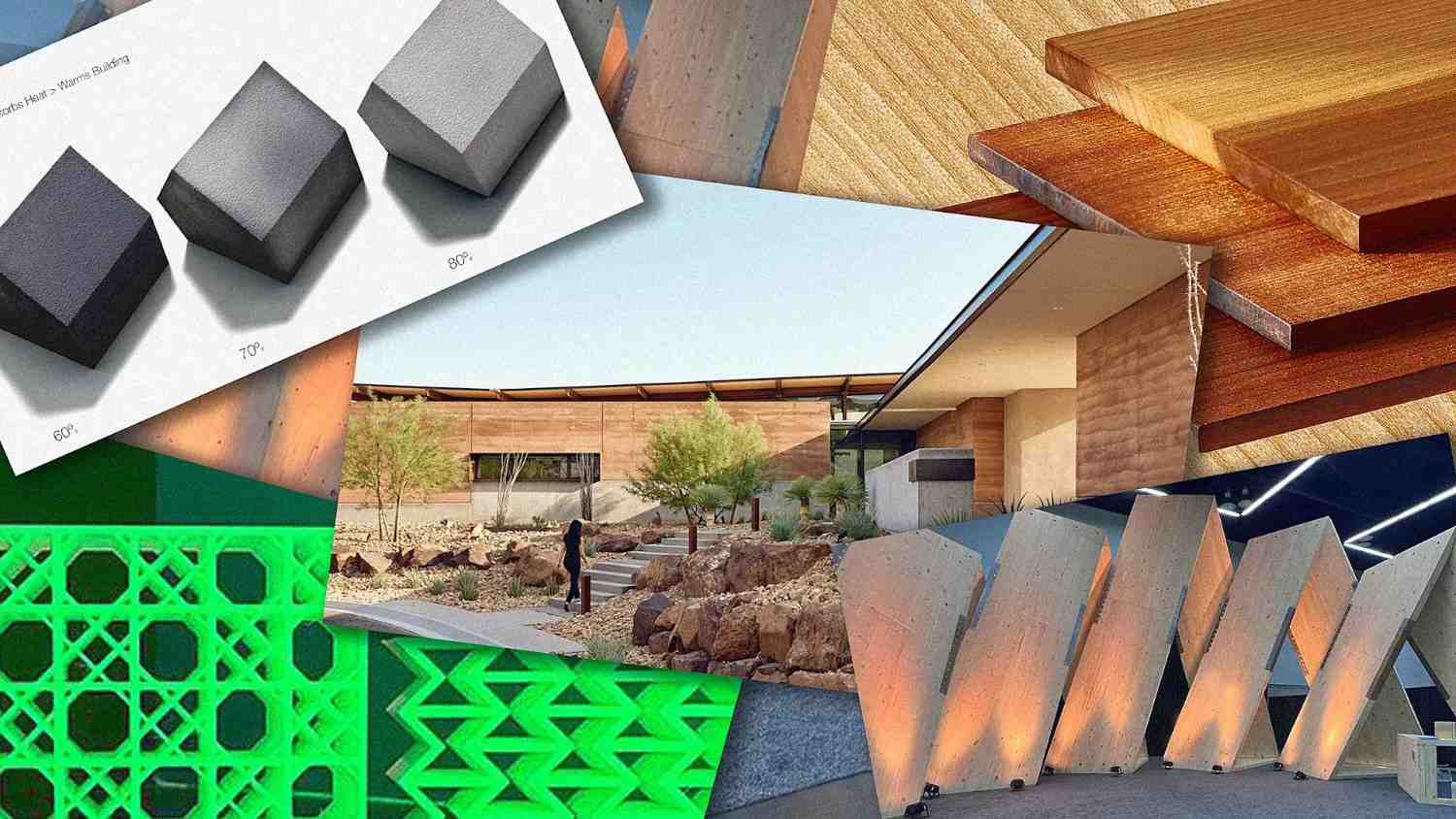- | 9:00 am
This is how architects are designing for water scarcity in the Middle East

With the Middle East being the most water-scarce region in the world and many countries experiencing the water crisis in recent years, there is a need to rethink how buildings and cities are made – every surface can be an opportunity to save water.
According to the World Resources Institute (WRI), in 2040, the Middle East will have 14 of the world’s 33 most water-stressed countries.
“If we think of water resources as a bank account, the region is now seriously overdrawn. Drawing water from rivers and aquifers faster than they can be replenished is equivalent to living beyond one’s means, and it undermines a country’s natural capital, affecting longer-term wealth and resilience,” said Hafez Ghanem, Vice President for the Middle East and North Africa (MENA), World Bank. “But there are solutions…“
In the Middle East, architects face the complex challenge of designing for an arid climate while addressing the increasing demand for sustainable urban environments.
Unlike regions with milder climates where green roofs and water-heavy landscaping solutions are viable, the region’s hot and dry conditions make such strategies ineffective.
Similarly, the high cost of water further exacerbates the need for efficient solutions, placing pressure on architects to find alternatives that minimize water usage.
Shwan Alhashimi, Managing Director at Archiplexus, says, “Water is a precious resource in the Middle East, and its scarcity drives up costs, further intensifying the need for efficient water management solutions. This economic reality pushes architects to innovate, finding ways to minimize water consumption without compromising the quality of urban life.”
To put it in perspective, water consumption in Dubai averages around 500 liters per person per day, a figure significantly higher than in cities like Montreal, where the average is approximately 220 liters per person per day.
This stark difference highlights the impact of the desert climate on daily water needs. It underscores the urgency for architects and urban planners in the UAE to incorporate sustainable water practices into their designs.
There’s also a dire need for a bigger culture shift.
Professor Camilo Cerro, an associate professor of architecture and interior design at the American University of Sharjah, says that while generating water in the region can be expensive, “there isn’t enough education around protecting the water, which should be a more important resource than gold in a desert.”
REVISING OLD WAYS
As the region grapples with water scarcity, there is a growing opportunity to redefine building design, making it energy-efficient and capable of contributing to water conservation.
Innovation is crucial in the architectural space—combining traditional methods such as Barjeel (wind towers) with modern techniques like humidity-based water harvesting.
“A lot of people don’t quite understand that. It doesn’t mean that every house will have a wind tower. It means learning from past techniques and what’s being done around us to do modern things. Local materials help because they are used to not having water, so they will require less water in the processes to be used,” says Professor Cerro.
According to Bettuel Mehdi, Junior Sustainability Architect at Dewan Architects + Engineers, already local building codes are heavily focused on water conservation across the Middle East, and architects and engineers are now designing using innovative techniques to approach these codes.
For example, Abu Dhabi’s Estidama building code emphasizes water efficiency through greywater recycling and rainwater harvesting systems. At the same time, Jordan’s National Code for Water and Energy Efficiency promotes water-efficient fittings in new developments.
At the same time, thanks to technology, more water can be generated. Professor Cerro points to technology that Bolivia incorporates, called fog catchers, a tool that captures fog and produces water droplets, and suggests that countries like the UAE, which have a lot of fog, adopt them.
“You don’t want one solution, you want 50 different solutions, and indirectly, they’re going to get into architecture. Presently, the big changes are how some designers think, and the big problem is that contractors don’t care much about the sustainability side of things because they want the money,” he adds.
One solution modern architects are exploring is revisiting traditional Middle Eastern architecture, such as wind towers, which capture cool breezes for natural ventilation.
Similar passive cooling techniques are also being studied, explains Alhashimi, but with a futuristic twist—integrating advanced materials like Metal-Organic Frameworks (MOFs) to passively collect water from the atmosphere. MOFs are highly porous structures capable of capturing water molecules even in low-humidity environments. They are particularly well-suited to the UAE’s coastal regions, where humidity remains high throughout the day.
Abu Dhabi’s Masdar City, designed by Foster + Partners, leads this by example, integrating wind towers to create cross ventilation and passive cooling. The institution seeks to enhance its collection of recovered rainwater and utilize desalination technology to recycle water.
Archiplexus is researching and developing Hygroscopic Skin Architecture, which leverages MOFs to absorb moisture from the air. These frameworks could be incorporated directly into the building’s envelope, allowing it to function like a sponge, absorbing water during the day and releasing water after sunset.
This approach helps regulate indoor temperatures through passive cooling and enables passive water collection, creating a self-sustaining ecosystem.
Mehdi says that cities like Dubai have advanced wastewater treatment systems that recycle water for irrigation, landscaping, and cooling in large buildings.
He adds that since landscaping can consume a significant amount of water, there’s similarly a big push towards using native plants that require minimal irrigation and are more suited to the harsh climate.
Moreover, the implementation of smart irrigation systems, which help monitor soil moisture and avoid overconsumption, have been implemented. Inside the buildings, architects are working on reducing water usage by adjusting flush and flow rates in kitchens and bathrooms.
“These technologies are largely experimental, but they hold great promise for the future of water conservation in architecture. For example, ongoing research is being done to integrate MOFs into architectural surfaces to passively collect atmospheric moisture, which can be used for non-potable purposes such as irrigation or cooling systems,” says Alhashimi.
If successfully commercialized, such advancements could significantly reduce the reliance on desalinated water, which is energy-intensive and costly.
FUTURE OF SUSTAINABLE ARCHITECTURE
The region has reached a point of no return, and the need to adapt to climate change is only growing.
“The problem is that the government is going in the right direction. Now, the population needs to follow. They need to stop trying to win awards and certifications and just get better at applying. Sustainability should be second nature to us right now because that’s not the thing anymore; it’s adaptability,” says Professor Cerro.
Meanwhile, Alhashimi says that the future of sustainable architecture in the region relies on developers, who must recognize that their choices today will directly impact the quality of life for generations to come.
“Whether it’s water consumption, energy efficiency, or the overall sustainability of a city, every building adds to the collective footprint.”
Solving the water crisis will not happen overnight, Alhashimi adds, but as architects continue to integrate sustainable principles into large-scale developments, the region will be better positioned to manage its water resources.
“Ultimately, the most significant impact will be felt by future generations, who will benefit from decisions made today. Sustainable architecture is essential to this effort, but it must be paired with equally forward-looking urban policies and developer accountability.”







































